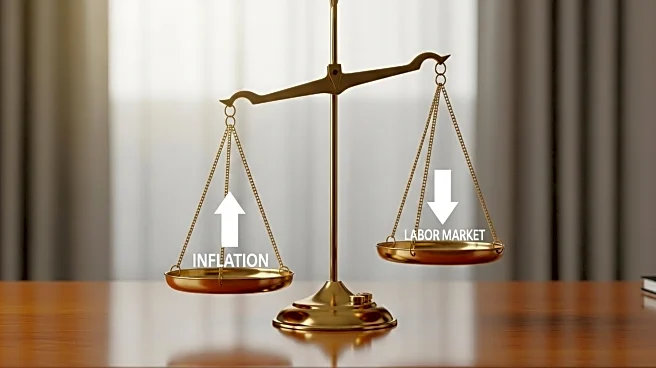What's Happening?
The U.S. labor market has shown signs of slowing down, with August 2025 data revealing a significant decrease in hiring. The Bureau of Labor Statistics reported that nonfarm payrolls increased by only 22,000 jobs, which is considerably lower than the forecasted 75,000. This slowdown has resulted in the unemployment rate rising to 4.3%. The data indicates a cautious approach to hiring, influenced by economic uncertainties under President Trump's tariff policies. Key sectors such as healthcare and social assistance added jobs, but these gains were offset by losses in government, mining, and manufacturing. The weak labor market data has heightened expectations for a Federal Reserve rate cut in September 2025, with financial markets pricing in a high probability of a reduction.
Why It's Important?
The anticipated Federal Reserve rate cut is significant for the U.S. economy as it could impact various sectors. Lower interest rates typically benefit growth stocks and real assets, including inflation hedges like gold. The labor market slowdown and potential rate cut could influence investment strategies, with sectors such as technology and consumer discretionary gaining traction due to improved financing conditions. Additionally, the rate cut could affect bond yields, signaling stagflationary pressures and impacting commodities like gold, which has seen a surge in prices. The economic landscape is poised for shifts as investors recalibrate portfolios to adapt to these changes.
What's Next?
The Federal Reserve's decision on the rate cut is expected to influence market dynamics significantly. Investors and businesses will likely adjust their strategies based on the Fed's actions, focusing on sectors that benefit from lower interest rates. The potential rate cut could lead to increased investment in growth sectors and commodities, while defensive plays in utilities and healthcare may offer protection against economic volatility. The evolving economic conditions will require stakeholders to remain agile and responsive to policy shifts and macroeconomic developments.











